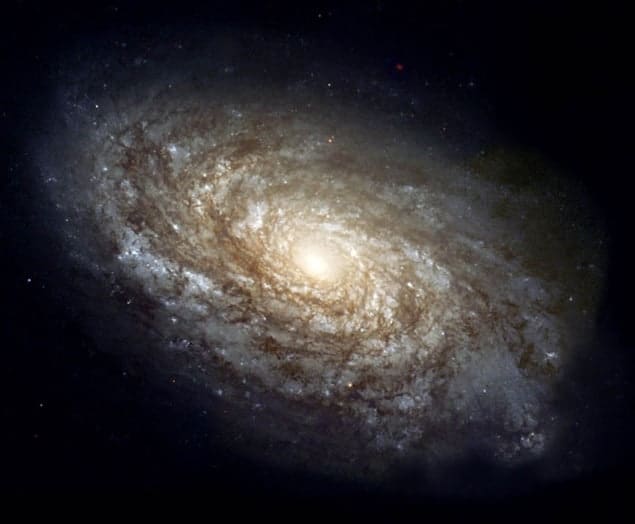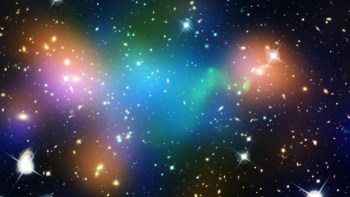
The universe was born spinning and continues to do so around a preferred axis – that is the bold conclusion of physicists in the US who have studied the rotation of more than 15,000 galaxies. While most cosmological theories have suggested that – on a large scale – the universe is the same in every direction, these recent findings suggest that the early universe was born spinning about a specific axis. If correct, this also means that the universe does not possess mirror symmetry, but rather has a preferred right or left “handedness”.
Led by Michael Longo from the University of Michigan, the team had set out to test whether mirror symmetry, also referred to as “parity”, was violated on the largest scales. If a particle violates parity, its mirror image would behave differently, and such particles can be described as right- or left-handed. Parity is violated in nuclear beta decays and there is a strong preference in nature for left-handed amino acids, rather than right-handed.
“To my knowledge, no-one had asked the question of whether the universe itself had a preference of say left-handed over right-handed. My idea was to test this by seeing if there was a preferred sense of rotation of spiral galaxies. At that time, I didn’t quite appreciate that, if so, it meant that the entire universe would have a net angular momentum,” explains Longo.
Galaxies in a spin
Longo and a team of five undergraduate students catalogued the rotation direction of 15,158 spiral galaxies with data from the Sloan Digital Sky Survey. They found that galaxies have a preferred direction of rotation – there was an excess of left-handed, or counter-clockwise, rotating spiral galaxies in the part of the sky toward the north pole of the Milky Way. The effect extended beyond 600 million light-years away.
The excess is small, about 7%, and Longo says that the chance that it could be a cosmic accident is something like one in a million. “If galaxies tend to spin in a certain direction, it means that the overall universe should have a rather large net angular momentum. Since angular momentum is conserved, it seems it [the universe] must have been “born” spinning.”
What impact would this have on the Big Bang and how the universe was born? Observers in our universe could never see outside of it, so we cannot directly tell if the universe is spinning, in principle, explains Longo. “But if we could show that our universe still retains the initial angular momentum within its galaxies, it would be evidence that our universe exists within some larger space and it was born spinning relative to other universes,” he told physicsworld.com. “I picture the Big Bang as being born with spin, just like a proton or electron has spin. As the universe expanded, the initial angular momentum would be spread among the bits of matter that we call galaxies, so that the galaxies now tend to spin in a preferred direction,” he explained. When asked if the preferred spin on a large scale could be induced by some other means, he agrees that, while it may be possible, a net universal spin would be simplest explanation and so probably the best-case scenario.
Looking for ‘other manifestations’
Longo also points out that the axis of asymmetry that they found is closely related to the alignments observed in WMAP cosmic microwave background distributions. He feels that it would be interesting to see if we could find “other manifestations” of a spinning universe.
The Sloan telescope is in New Mexico, and therefore the data that Longo’s team analysed came mostly from the northern hemisphere of the sky. However, they did find a similar trend in the galaxy spin data from the southern hemisphere compiled by Masanori Iye and Hajime Sugai in 1991. Longo and his students are now looking through more data to show an equal excess of right-handed spiral galaxies in the southern hemisphere.
Neta Bahcall, an astrophysicist at Princeton University in the US, feels that there is no solid evidence for a rotating universe. “The directional spin of spiral galaxies may be impacted by other local gravitational effects,” she said. She believes that this could result in small correlations in spin rotation over distances less than about 200 Mpc – whereas the observable universe is about 14 Gpc in size. She feels that the uncertainty quoted in the paper includes only the minimal statistical uncertainty and that no systematic uncertainties – such as local gravitational effects or the fact that galaxies are correlated with each other – have been considered.
A paper on the findings is published in Physics Letters B 10.1016.



